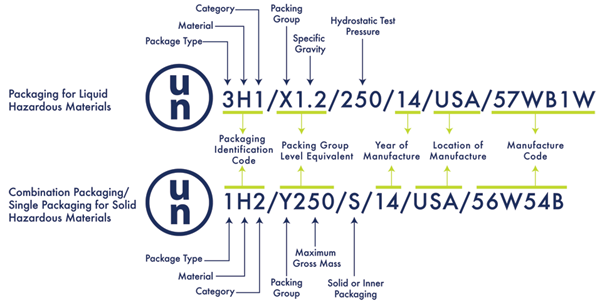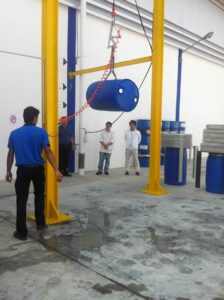FAQ's
UN Certifications

UN Certifications are required for packaging, marking and labelling of dangerous goods, in order to transport it safely (by road, rail, sea and air). Testing is required to be carried out before a UN Certification can be issued.
Yes, certificates generated by our Lab are valid internationally.
Depending on the material and type of Drum, Drop test, Stack test, Cobb test, Leakproofness test and Hydraulic test may be required.

Single certificates are valid for air and sea transportation.
The Packing Group is a grouping of substances (other than those in Hazard Class 2, Class 6 Division 2, and Class 7), in accordance with the degree of danger they present: The appropriate packaging is also dependent on the Packing Group of the material
- Packing group I(X): substances presenting high danger.
- Packing group II(Y): substances presenting medium danger.
- Packing group III(Z): substances presenting low danger.
Biodegradability Testing
Biodegradability testing measures the complex biochemical process that occurs when microorganisms consume a given type of material. Although complicated, the test results measure relatively simple markers of the biodegradation process. Acc to the laws, a minimum of 90% rate of biodegradation should occur for a valid certification to take place.
You can check Biodegradability of plastics by testing the products as per ASTM, ISO or IS standards.
Aerobic Biodegradation is the breakdown of organic contaminants by microorganisms when oxygen is present. More specifically, it refers to occurring or living only in the presence of oxygen; therefore, the chemistry of the system, environment, or organism is characterized by oxidative conditions.
Aerobic Biodegradation testing of plastics is testing of plastics in aerobic conditions such as soil, compost, sea water.
ASTM D 5988/ ISO 17556 for soil
ASTM 5338/ ISO14855 for compost
ASTM 6691 for sea water
The degradation of compounds by microorganisms in the absence of oxygen is termed as Anaerobic Biodegradation. The process whereby microorganisms use a chemical other than oxygen as an electron acceptor.
Anaerobic Biodegradation testing of plastics is testing of plastics in anaerobic high solid digestion conditions that resembles landfill conditions.
ASTM D 5511 Or ISO 15985
Conducting Biodegradation Testing with ERRL
You can email us on contact@errl.co.in or directly call us on +91-9820041728
Our Lab facility is situated in Mumbai, India & in Singapore.
Since there are on many different parameter including quantities, specifications, etc; we do not offer a standard price list. You can contact us on contact@errl.co.in mentioning product type, size specification and quantities and we will assist you in the best possible way.
Yes, we already serve customers both in India and globally since last decade.
Yes. Our reports are accepted in Central Pollution Control Board as well as State Pollution Control Board for approvals. We are NABL, BIS & IAS certified which enables our lab’s reports for government approvals according to the PWM amendment rule by CPCB.
Yes. Our reports are valid worldwide & we have been catering to global customers since the inception of our lab.
Our lab can test for biodegradability & compostability of bio-polymers, bioplastics, pla, pbat, oil, chemicals, fabrics, agri-products, bagasse, wood, cotton, etc
We can test for raw materials like granules & pellets and finished products like bags, bottles, cups, glass, straws, tableware, cutlery, packaging, testing kits, cards, shows, clothes, pulp, chemicals, oil, biofuel, etc.
